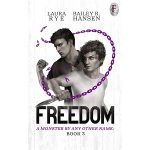Here is the summary of Fanged Interest by Chloe Peterson
Vampires have been a captivating part of folklore and popular culture for centuries. These mythical creatures, with their fangs and thirst for blood, have intrigued and frightened people around the world. In this essay, we will explore the concept of “Fanged Interest,” delving into the history, evolution, and cultural significance of vampire lore.
I. The Roots of Vampire Lore
Vampire folklore can be traced back to various cultures and time periods, each contributing to the rich tapestry of vampire mythology.
- Eastern Europe: The Slavic regions are often associated with the earliest vampire legends, including the vrykolakas and nosferatu. These creatures were believed to be reanimated corpses with a craving for human blood.
- Asia: Asian vampire myths, such as the Chinese “jiangshi” and the Filipino “aswang,” differ in characteristics but share themes of the undead and malevolent spirits.
- Mediterranean: The Mediterranean world also has its vampire legends, like the Greek “striges” and the Roman “strigoi,” which were female bloodsucking creatures.
II. Evolution of the Vampire in Literature and Film
The vampire’s journey from folklore to mainstream culture began with its depiction in literature and, later, film.
- Bram Stoker’s Dracula (1897): Bram Stoker’s iconic novel “Dracula” introduced the character of Count Dracula, a Transylvanian nobleman with a thirst for blood. This work laid the foundation for many vampire tropes and adaptations.
- Vampire Cinema: Vampire films, such as F.W. Murnau’s “Nosferatu” (1922) and Tod Browning’s “Dracula” (1931), brought vampires to the silver screen, solidifying their place in popular culture.
- The Evolution of the Vampire: Over the years, vampires have evolved from terrifying, malevolent creatures to more complex, morally ambiguous characters. Works like Anne Rice’s “The Vampire Chronicles” and Stephenie Meyer’s “Twilight” series explored the emotional and romantic aspects of vampirism.
III. Themes and Symbolism
Vampire lore is rich with themes and symbolism that reflect various societal concerns and anxieties.
- Immortality and Fear of Death: Vampires, as immortal beings, represent the human fear of death and the allure of everlasting life.
- Seduction and Temptation: The hypnotic and seductive nature of vampires reflects desires, temptations, and the dangers of giving in to them.
- Marginalization and Otherness: Vampires often symbolize societal outcasts or “others,” as they exist outside the norms of human society.
- Sexuality and Desire: Vampires are often associated with sexual desire, blurring the boundaries between eroticism and danger.
IV. Cultural Significance
Vampire lore has left an indelible mark on culture and has often been used as a vehicle to explore complex themes.
- Allegory for Social Issues: Vampire narratives have been employed as allegories for various social issues, including xenophobia, addiction, and sexual identity.
- Exploration of Morality: Vampire stories frequently challenge conventional morality, prompting viewers and readers to question their own ethical boundaries.
- Catalyst for Conversations: Vampires have become a catalyst for conversations about identity, belonging, and the consequences of unchecked power.
V. Modern Interpretations
Vampires continue to be a prominent presence in contemporary popular culture.
- Television Series: Shows like “Buffy the Vampire Slayer,” “True Blood,” and “The Vampire Diaries” have explored the complexities of vampire-human relationships and the moral dilemmas faced by both.
- Reimagining Classics: Modern authors and filmmakers often revisit classic vampire stories, offering fresh perspectives and interpretations.
- Diversity and Representation: Contemporary vampire narratives have become more diverse, incorporating a wide range of characters and backgrounds.
VI. The Twilight of the Vampire
The popularity of vampire-themed media has had its peaks and valleys, leading some to speculate about the twilight of the vampire trend.
- Oversaturation: The proliferation of vampire-themed content may have led to oversaturation and a sense of fatigue among audiences.
- Shifting Trends: As cultural interests change, vampires may give way to new supernatural or mythological beings.
- Enduring Appeal: Despite challenges, the enduring appeal of vampire lore suggests that these creatures will continue to evolve and adapt to capture the interests of future generations.
Conclusion
“Fanged Interest” represents the enduring fascination with vampires and their place in folklore, literature, and popular culture. From their origins in Eastern European legends to their transformation into complex and multifaceted characters in contemporary media, vampires have captured our imaginations and challenged our perceptions of morality, desire, and identity. As long as human fears and desires persist, the vampire will remain a compelling symbol, continuing to evolve and adapt to the ever-changing landscape of cultural and societal concerns.
Relevant File technicalities:
. Name of Title: Fanged Interest
. Author Name: Chloe Peterson
. Language for Reading: English
. Supportive Formats: PDF/ePub
. Cost For Getting: Free to Download
. Genre: LGBTQ+ Romance
. Series: None
. Price: Free
. Publish Date: 2 September, 2023
Fanged Interest by Chloe Peterson Download PDF
Download your desired file snap on the button specified below to download Fanged Interest by Chloe Peterson. The download method is fully financed without any spammy or broken links with the infant quality of PDF and ePub. All the links on our servers are quick, clean, and free from panic and spammy advertisements. You may also like A Counterfeit Betrothal by Denise Weimer PDF Download








